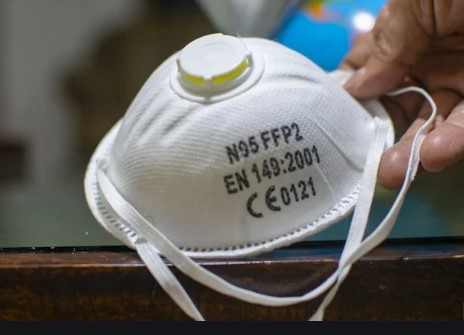Houston: Healthcare workers, facing the shortage of protective equipment such as N95 masks, are left with no other option but to reuse their gear, thus increasing the risk of spreading coronavirus infection.
However, there may be help on the way as researchers at the Department of Energy’s SLAC National Accelerator Laboratory, Stanford University and the University of Texas Medical Branch have found that gently heating N95 masks in high relative humidity could inactivate SARS-CoV-2 virus trapped within the masks, without degrading their performance.
“This is really an issue, so if you can find a way to recycle the masks a few dozen times, the shortage goes way down,” said Stanford physicist Steven Chu, a senior author on the new paper.
“You can imagine each doctor or nurse having their own personal collection of up to a dozen masks. The ability to decontaminate several of these masks while they are having a coffee break will lessen the chance that masks contaminated with COVID-19 viruses would expose other patients,” Chu said.
In the new study, Chu, along with the University of Texas Medical Branch virologist Scott Weaver and Stanford/SLAC professors Yi Cui and Wah Chiu focused their attention on a combination of heat and humidity to try to decontaminate masks.
Working at the World Reference Center for Emerging Viruses and Arboviruses, which has biosafety measures in place for working with the most contagious viruses, “the team first mixed up batches of SARS-CoV-2 virus in liquids designed to mimic the fluids that might spray out of our mouths when we cough, sneeze, sing or simply breathe.
“They next sprayed droplets of the brew on a piece of meltblown fabric, a material used in most N95 masks, and let it dry”.
They heated their samples at temperatures ranging from 25 to 95 degrees Celsius for up to 30 minutes with relative humidity up to 100 per cent.
Higher humidity and heat substantially reduced the amount of virus the team could detect on the mask, although they had to be careful not to go too hot, which additional tests revealed could lower the material’s ability to filter out virus-carrying droplets.
The sweet spot appeared to be 85 degrees Celsius with 100 per cent relative humidity – the team could find no trace of SARS-CoV-2 after cooking the masks under those conditions.
Additional results indicate that masks could be decontaminated and reused 20 times and the process works on at least two other viruses; a human coronavirus that causes common cold and the chikungunya virus.
Weaver of UT Medical Branch said although the results are not especially surprising – researchers have known for a long time that heat and humidity are good ways to inactivate viruses – there hadn’t been an urgent need for a detailed quantitative analysis of something like mask decontamination until now. The new data, he said, “provide some quantitative guidance for the future.”
And even after the coronavirus pandemic is over, there are benefits, in part because of the method’s application beyond SARS-CoV-2 to other viruses, and because of the economic and environmental benefits of reusing masks. “It’s good all around,” Cui said.
The team reported their results September 25 in the journal ACS Nano.
The research was supported by the DOE Office of Science through the National Virtual Biotechnology Laboratory, a consortium of DOE national laboratories focused on response to COVID-19, with funding provided by the Coronavirus CARES Act and by the World Reference Center for Emerging Viruses and Arboviruses, funded by the National Institutes of Health.
PTI
